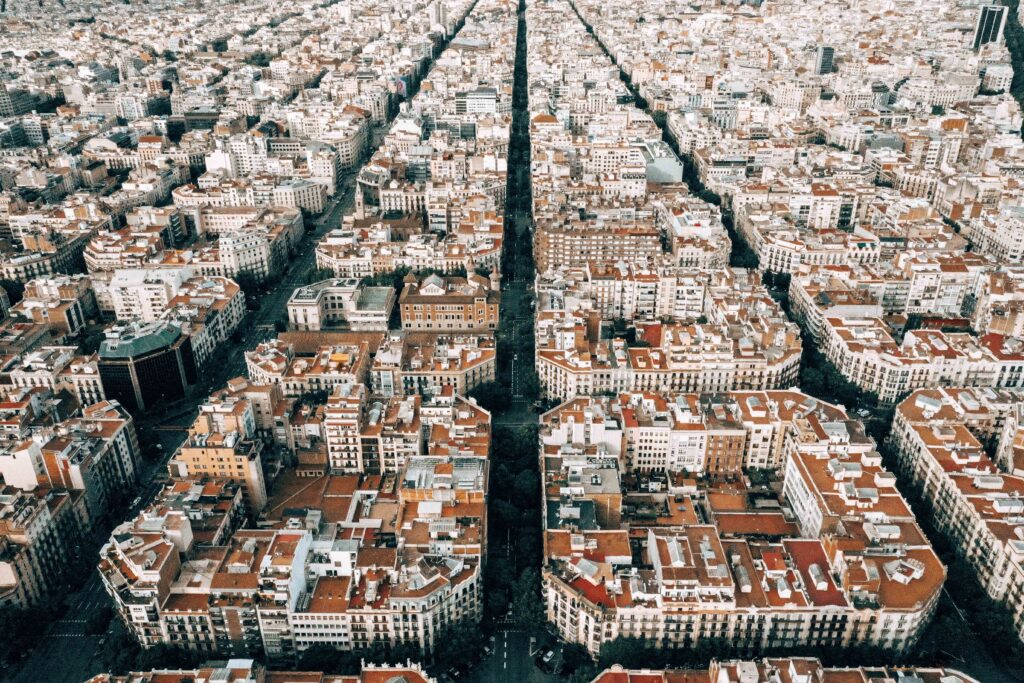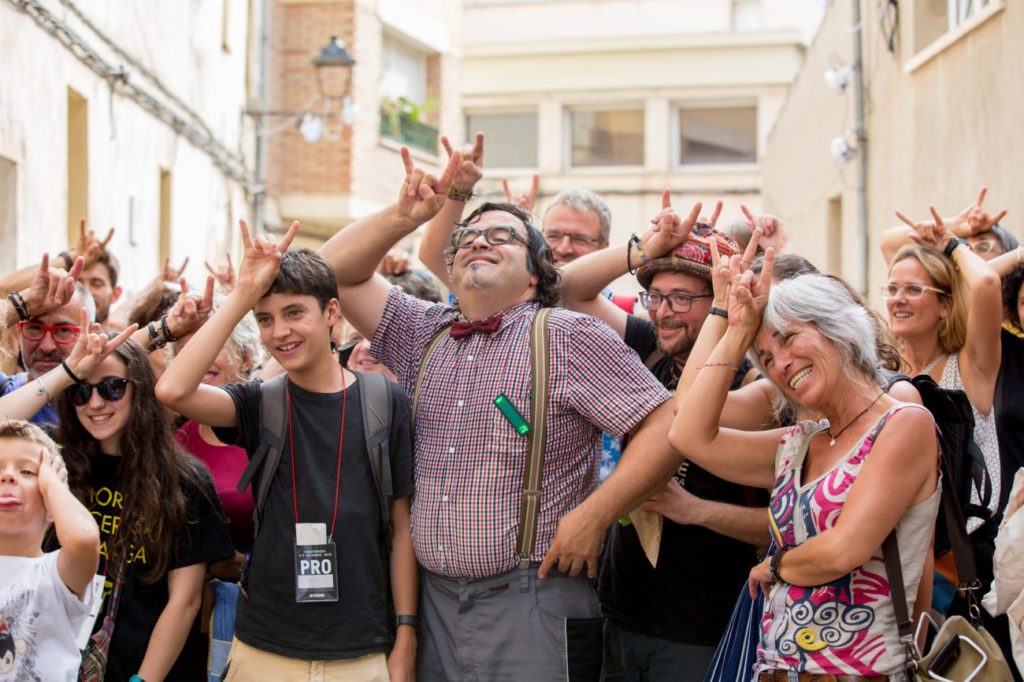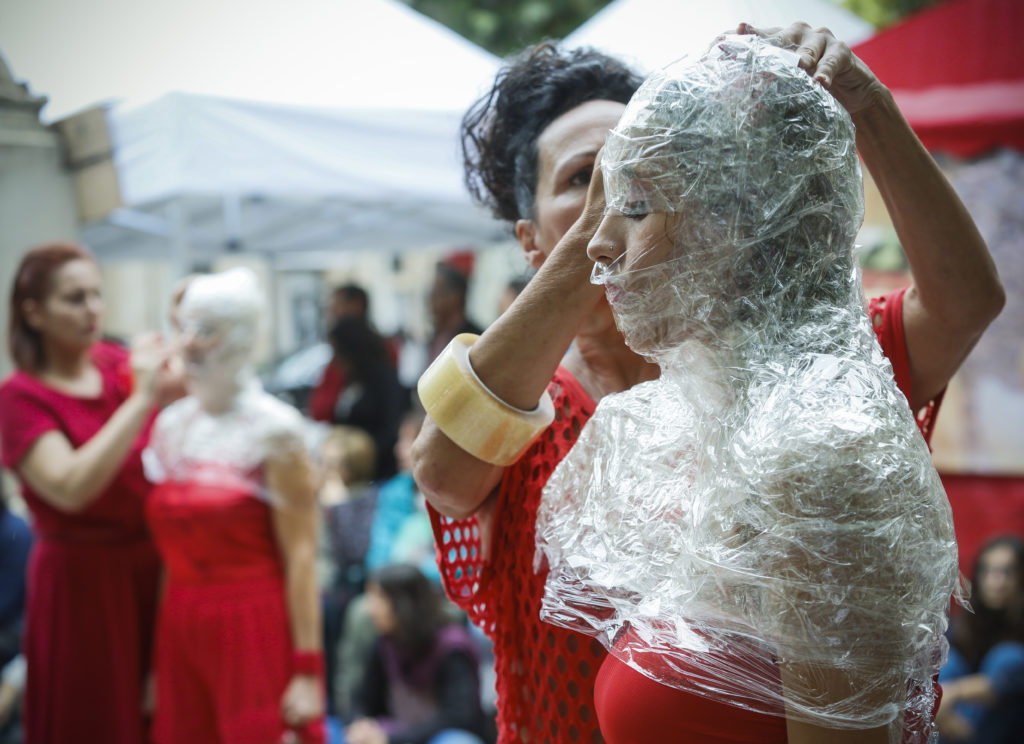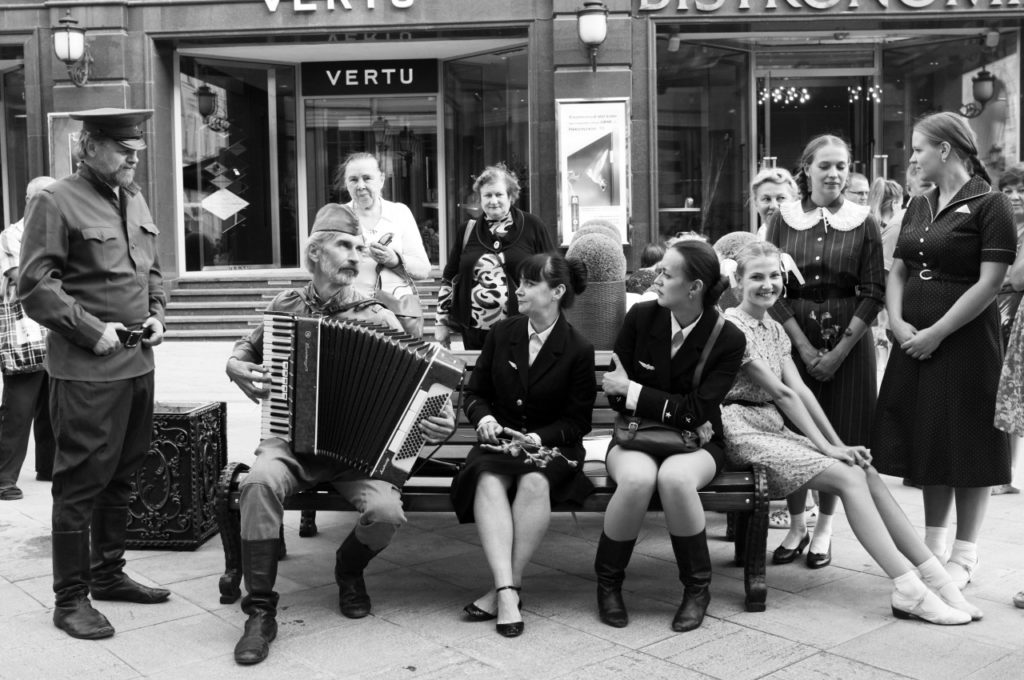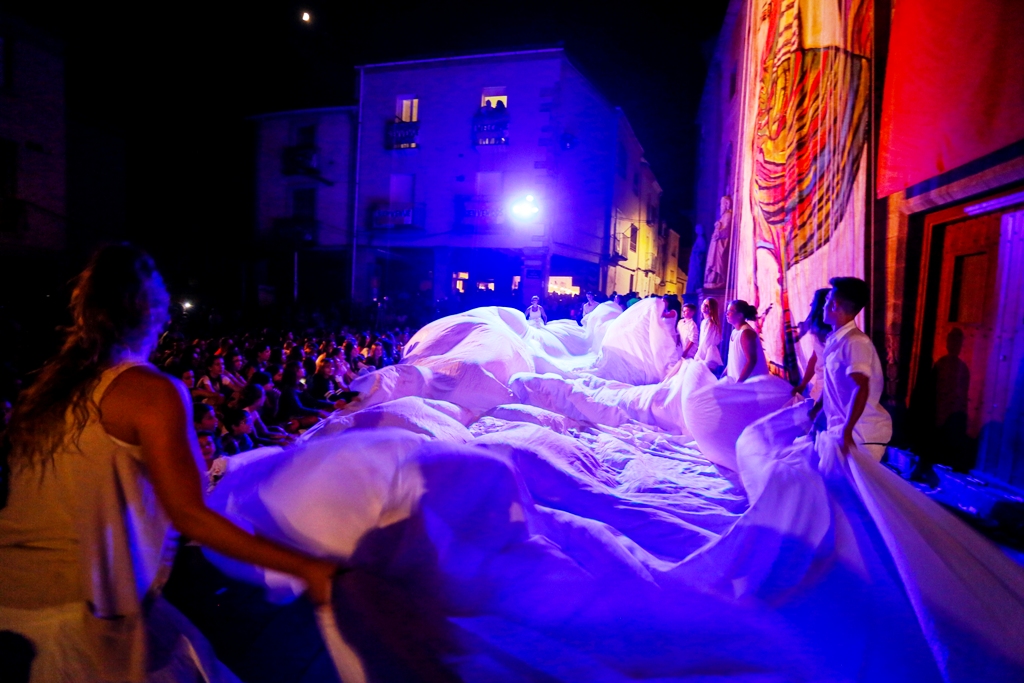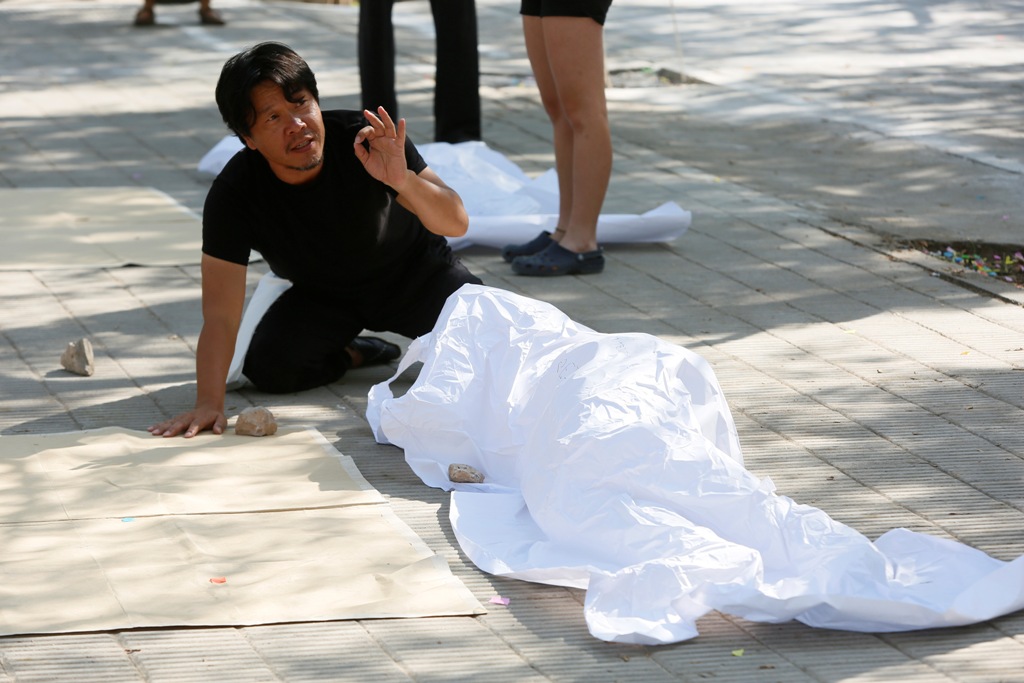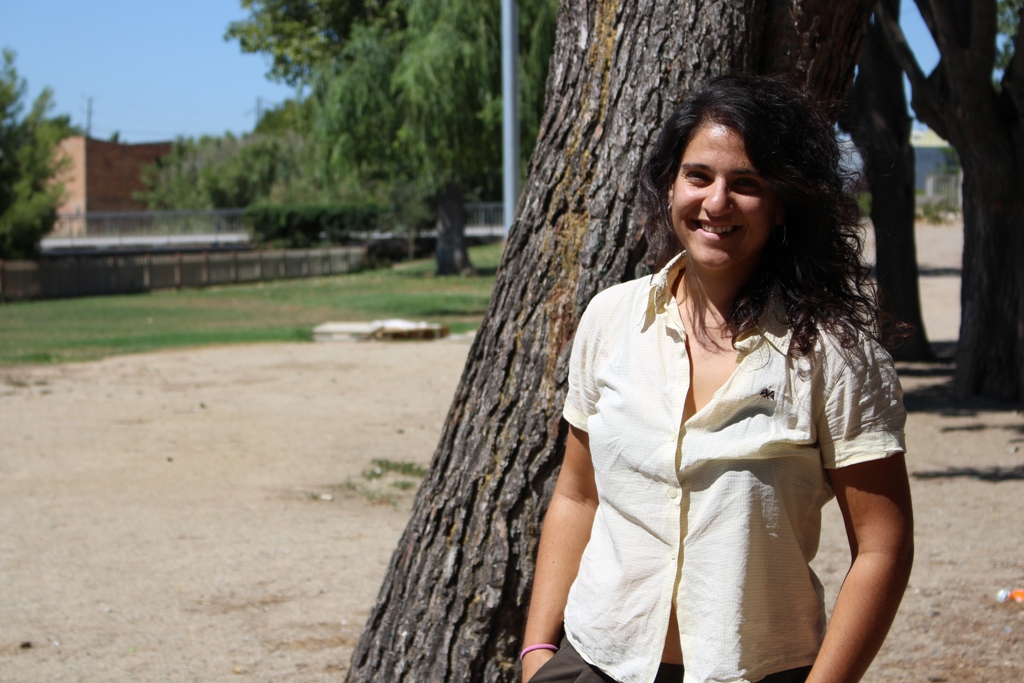-
Arts de carrer, FiraTarrega, Urbanisme 06/04/2020 Àrea de comunicació
L’èxit internacional d’unes arts de carrer ingovernables
Catalunya és un dels màxims exportadors mundials de creacions en arts de carrer i espai públic. Però, quines en són les raons? Què explica aquest èxit i reconeixement internacional? Anna Giribet, directora de FiraTàrrega, ens ho explica en aquest article.
En la conversa inaugural de FiraTàrrega 2019, Xavier Antich deia que «l’espai públic és el lloc que els cossos acaben transformant; per això l’espai públic és literalment ingovernable». La vitalitat i riquesa de l’escena actual de les arts de carrer catalanes és un fet —reconegut internacionalment—, i per entendre-ho és imprescindible començar amb una aproximació des de l’urbanisme.
George-Eugèn Haussman, (polític, 1809-1891) va convertir París en una xarxa al servei d’una ciutat en moviment. Frederik Law Olmsted (arquitecte paisatgista, 1822-1903) va dissenyar un entorn rural com Central Park al cor de Nova York. Ildefons Cerdà (urbanista, 1815-1876) va idear un teixit urbanístic a Barcelona. Tres figures de l’època moderna que van canviar les seves ciutats. Més enllà de la forma, es van preocupar per la vida de la ciutat, la convivència. Haussman lluitava per aconseguir una ciutat accessible, Olmsted per una ciutat sociable i Cerdà somiava amb una ciutat igualitària. Accessible, sociable i igualitària. Llegir més…
-
FiraTarrega, General 02/05/2019 Àrea de comunicació
FiraTàrrega’s new direction
Anna Giribet Argilès, Art Director
Eduard Ribera, Head of Communication
Over the next five years FiraTàrrega will be embarking on a new creative and managerial project. As a result of recent changes to both the Fair’s directing positions these first few months have been spent in redoubling efforts to find the lowest common denominator that responds to the spirit of projects presented by Lau Delgado, the new executive director, and Anna Giribet, the new art director. Along with the rest of the team, we have been reflecting very seriously on what role we should play within the sectorial mechanism of the Generalitat de Catalunya’s strategic culture market. This process of reflection has prompted us to define a series of new action frameworks for the Fair to operate within over the next five years.
-
Art comunitari, Art inclusiu, Arts de carrer, Comunitat, FiraTarrega, Públics, Suport a la Creació 30/05/2018 Àrea de comunicació
Algo tiene la calle
Dimensiones de un hábitat creativo
por Oriol Martí i Sambola, Director ejecutivo de FiraTàrrega
La calle: tratar de describir la calle, de qué está hecha, para qué sirve
Georges PérecCrear en el espacio público es hablar con un lenguaje propio, desnudo, esencial y sincero. Y mucho más. Esto es lo que creo haber aprendido a lo largo de los años y lo que aquí propongo desarrollar desde lo teórico y lo conceptual.
Me refiero a las particularidades consustanciales de las artes escénicas (en mayor medida, por cercanía profesional) y de las artes plásticas, la música, la escultura o la instalación realizadas expresamente en la calle, la plaza, la travesía, el pasaje, el bulevar o la rotonda.
¿Cuáles son las particularidades de la calle cuando la entendemos como espacio creativo? Para afrontar esta cuestión es necesario un inicio antitético: se entiende cómo es la calle analizando cómo no es el recinto. Y hay análisis no antitético, no comparativo. Lo veremos también.
Este artículo identifica seis aproximaciones definitorias de la calle creativa: la dimensión urbanística, la política, la artística, la simbólica, la tecnológica y la atmosférica, presentadas a través de sus porqués, sus relatos y sus ejemplos. Llegir més…
-
FiraTarrega, Formació, General, Suport a la Creació 19/06/2017 Àrea de comunicació
Creation in town, Tàrrega calls for accomplice
By Mio Nakano, Cultural management master course student, intern at Fira Tàrrega Used to work on set decoration for films and TV commercials.
mionakano18@uic.esPlace + Story + Moment + You. You are the one who complete the affair.
For the shooting, we travel a lot. The shooting locations are the places you won’t go without a particular reason. They don’t attract tourist but if you wear special glasses of film maker, the sight will appeal to you with vivid color. Story is about ‘someone like you who lives an ordinary life’, so the location is in a little town away from any major city in a frequent situation. The location coordinator brings an empty modest house, and we the decorators revive the abandoned house. Bring a set of furniture, fill the fridge, plant flowers in the garden, and some supermarket receipts in the rubbish bin. The crew arrives. Director loves the set. Cameraman fix the angle. The lighting comes into the room more natural than sunlight. Shooting starts. Cut, OK. Another angle. The designer looks into the finder. Then says, ‘Mio, missing something.’ On the monitor, he points out this empty wall behind the face of the actor on rehearsal. We definitely should put something there, if not, this cut wouldn’t look lively. Something natural to hang on the wall, which creates atmosphere, maybe from the region, but not too flashy, goandfindityouhave10minutes. I start to run before he finishes the phrase. Llegir més…
-
Arts de carrer, Arts escèniques, Comunitat, FiraTarrega 12/06/2017 Àrea de comunicació
FiraTàrrega, a market but still a festival
Per Iryna Malinskaya, alumna del Màster en Gestió Cultural de la Universitat Internacional de Catalunya (UIC) iryshkamal@gmail.com
When getting an opportunity to be involved in organizational process of a performing arts festival, you find yourself thinking: what do I know about concepts and ideas laying deep under the surface? Are these implications obvious to the audience? Have I ever, being a spectator, realized a reason driving to partake in an organized crowded chaos?…
Launched mainly as a popular street festival, today the FiraTàrrega is the international market of performing arts, a place for promotion of new artists, creation, exhibition and training, a meeting point for professionals. But it remains a festivity for the public embodying originally rooted meanings of a festival as public joy and abstinence from daily life simply because of the so-called paradox of a spectator as Jacques Rancière stated – there is no theatre without a spectator.
-
Arts de carrer, Arts escèniques, Espectacles, Festivals, FiraTarrega, Suport a la Creació 06/03/2017 Àrea de comunicació
Poetry in action. Or some ways to go when something first starts
By Eva Marichalar-Freixa. Creator, arts based methods researcher@virginiafochs
Aquest text és una justificació i un document de partida del projecte internacional A Ferida / La Herida, coproduït entre el festival Imaginarius i FiraTàrrega que té una clara voluntat de diàleg artístic entre creadors catalans i portuguesos al voltant del concepte de la memòria. L’espectacle resultant s’exhibirà a l’edició 2017 de FiraTàrrega.
Here is some first data: City of Tàrrega, 2016/11/20 – 2016/11/23. During these days, Fira Tàrrega and Festival Imaginarius brought together a group of Catalan and Portuguese artists to set up the basis of a new project for research and co-creation between both countries; each artist was asked to create and perform a solo piece that would then be a part of a dialogue between them all. Some more data to continue: Our memories as a keystone to trigger conversations between two countries that have grown up turning their back on each other. Our memories as an opportunity for each artist to explore beyond his/her previous boundaries, simultaneously enhancing personal singularity. Our memories as a collective place where to dig into intimacy, so that we can then put them into conversation. This coproduction between both festivals will see its first premiere next spring at Festival Imaginarius, and then again in a new setting at FiraTàrrega in September. Confirmed artists are Rui Paixão, Catarina Campos, Alba Torres, Pau Masaló Llorà, Quim Giron Figuerola, and artistic director Julieta Aurora Santos.
On that first intensive meeting back in November, after being contacted by both festivals to outline and coach a methodology for this start-up encounter, I met the group with a very specific goal in mind: creating situations where active listening and favourable conditions for acknowledging one another could emerge. Each one should be introduced to the rest of the group by the means of the experience that was being shared by the whole group. Each one’s singularity should get the chance to be recognized at its right time during these first days, having also the opportunity to share previous personal creations and a professional profile that would then increase the possibilities of this collective project. Situations where outlined as in a three days dérive. I chased for those moments where to get lost and those where to be found, some moments to walk and some others to sit down around a table settled with some food and drinks, moments in solitude and moments to feel each other’s nearness, moments to talk to oneself and moments where to hold long and passionate conversations all together. Those where optimal moments to build up the foundational agreements of the whole process that was about to start: What was important for us to talk about? Which landscapes would take us and our stories in? What channels could facilitate growing up our conversations over the distance? How were we going to deal with production terms and conditions? It was important for me that each single decision to be made brought within the same melody, the same aesthetics that we could later on identify when enjoying the final performance first in Santa Maria da Feira and then in Tàrrega. During these days, I focused on those in-between spaces and times where nothing seems to happen, nevertheless, the most essential is being revealed. I cared for facilitating spaces and times where the group could build up a frame of mutual understanding where to go back to when feeling lost, a place where to feel at home quick after meeting again for intensive rehearsals before both premieres. After our kick-off encounter in Tàrrega, the team would be creating apart together; that is, they should start creating their solo pieces and the narrative that would join them all miles away from each other. Distance is a hard condition to play with; we knew that at some point, we would end up facing disenchantment. Therefore, building up a symbolic house which hosted the aesthetics of the relations braided on those first days was not only a key condition to overcome future concerns, but also the core of a previous need that would shift us from the pre-established idea of site-specific to that one of symbolic-specific, as I like to call it. It was during our stay in Tàrrega when we could feel the symbolic growing up strongly as a place, a house, a key idea, the heart of the creation. Translating that into words, the group decided to call it LA HERIDA / A FERIDA. Wounds came up as the formalization of all those agreements made during that first encounter, an appropriation of the concept that both festivals had asked us all to start up with, the official title and yet a symbolic space –that is, our home, our island, silence, a circle, a hole, flat and dimensional, a lived space, a space for deconstruction and construction, prohibition, omission, farce, disorder. Llegir més… -
Art inclusiu, Arts de carrer, Arts escèniques, Comunitat, Espectacles, Estudis, Festivals, FiraTarrega, Formació, Política cultural, Públics, Suport a la Creació 15/10/2016 Àrea de comunicació
FiraTàrrega i les arts de carrer o transformació, vivència, impacte i valor
Fent una mirada enrere als seus 36 anys de (pleníssima) vida, una de les particularitats de FiraTàrrega és que sempre ha estat en procés de transformació. Fer-ne un estat de la qüestió estàtic comporta el risc que la fotografia surti moguda. I no pas com a inconvenient, sinó com a virtut (pràcticament necessitat) que ha fet que avui, després d’aquell llunyà 1981 (primera edició de la Fira) aquesta celebració escènica sigui plenament vigent als nostres temps.
FiraTàrrega està en aquestes últimes edicions culminant un procés de transformació que s’explica pel desplegament, sofisticació i diversificació del foment i l’estímul de la creació catalana en general i de les arts de carrer en particular. Així, si històricament FiraTàrrega havia estat un espai d’exhibició escènica i de mercat professional, avui aquesta pota es complementa amb dos altres eixos: d’una banda, el Programa de Suport a la Creació, basat en coproduccions i residències creatives de projectes escènics que pel seu caràcter fràgil, singular i necessari (cal no oblidar la condició de servei públic de FiraTàrrega) requereixen d’un acompanyament artístic, tècnic, empresarial, comunicatiu, etc. D’altra banda, en els últims anys hem entès que el treball de laboratori de creativitats vinculades a l’espai públic i la no-convencionalitat també es pot canalitzar a través de la formació. D’aquí en sorgeixen els estudis propis de Màster i Postgrau nascuts el 2013 i que desenvolupem amb la complicitat i l’acompanyament de la Universitat de Lleida.
-
Art comunitari, Art inclusiu, Arts de carrer, Arts escèniques, Comunitat, Espectacles, FiraTarrega, General, Suport a la Creació 03/10/2016 Àrea de comunicació
Crònica d’Antonio Zúñiga sobre la participació de Carretera 45 a FiraTàrrega 2016
Fira Tarrega 2016, será inolvidable. Una experiencia que dejó huellas muy hondas en nuestras vidas. En nuestros cuerpos y en nuestras miradas. Participamos de algo que en estos tiempos se antoja único, pero que ha sido siempre el principal ingrediente del teatro, del encuentro entre personas que hacen comunidad. Un intercambio inusitado, entre lo viejo y conocido pero ahora olvidado y lo único real como esencial en el teatro: El abrazo de los desconocidos. El trabajo constante, en comunidad, en armonía de fiesta y en solidaridad humana, fue lo que marcó la participación de Carretera 45. De ahora en adelante, eso forma parte de nuestros enseres de viaje para utilizar en nuestros siguientes trabajos escénicos. En Fira 2016, convivieron muchas miradas entre seres humanos primero lejanos, que terminaron como amigos. Estrecharon vínculos y crearon arte popular. Arte del pueblo que nace del pueblo, sin demagogias. Llegir més…
-
Art comunitari, Art inclusiu, Arts de carrer, Comunitat, Espectacles, FiraTarrega, General, Suport a la Creació 22/09/2016 Àrea de comunicació
Crònica de Cheolsung Lee sobre la participació de “Massager” a FiraTàrrega 2016
In the beginning of the performance ‘Massager’, I explained to the audience for a while about why we need a massage. I said, “By the massage, our body can be well energized, and mind and soul too!” I experienced exactly the same by the massage from the nature and people in Tarrega and I was so well energized, healthy, full of inspiration and especially well energized with my heart by the big ‘Corazon’ of Tarrega’s people.
The participants(citizen-performers as street massagers) were usual people like me in the beginning, but we exchanged our energies, enjoyed them so much and made them grow up till they became one big Corazon! The performance ‘Massager’ is originally for the massage toward the heart, not just body. We served the massage to the audience by means of emotional and sensitive actions such as touching, driving hard and hugging the audience’s bodies. Llegir més…
-
Art comunitari, Arts de carrer, Arts escèniques, FiraTarrega, Formació, Suport a la Creació 09/09/2016 Àrea de comunicació
L’especulació continua existint, el mercat continua i li és igual què hagi passat
ENTREVISTA A MARIA CAPELL, SILERE
Tots els inicis són interessants d’explicar. El d’aquest projecte comença a aquí, a Tàrrega, al Màster de Creació en Arts de Carrer de FiraTàrrega i la UdL. Què et fa interessar per aquest Màster especialitzat en creació a l’espai públic?
Jo em vaig interessar pel màster per dues raons: primer perquè parlava de la ciutat, que és un tema que ja m’interessava d’abans, però que no tenia iniciat i després, perquè parlava de comunicació i producció, que és el que jo estava fent aleshores, treballava en temes de producció i organització. Em va agradar molt i vaig decidir continuar amb els altres mòduls del màster, que tenien més a veure amb la creació, tot i que en aquell moment no pensava que allò que tenia al cap fos prou interessant per tirar-ho endavant. És per això que en el sentit de creació no tenia previst seguir. No sé com he arribat fins aquí, perquè no ho tenia pas previst! Jo pretenia fer un mòdul de tres setmanes i ja porto un any i mig amb el projecte.Un any i mig que ha anat des del treball final de màster a FiraTàrrega…
La temàtica del treball final sorgeix d’una de les assignatures del màster, que era ‘Dramatúrgia en l’espai’. Jo em vaig posar a treballar en coses que m’interessaven, en arquitectures populars i tot això em va portar a pensar en projectes urbanístics que s’havien de fer a Tàrrega i no s’han fet i em vaig centrar en un en concret, en la seva història. Totes les conseqüències que tindria la construcció d’aquest projecte, que havia de ser una gran obra, les institucions parlaven de l’última gran oportunitat per a Tàrrega abans de la crisi i no va acabar passant res. Al final ha acabat sent un terreny que ningú vol, un espai buit. Llegir més…

